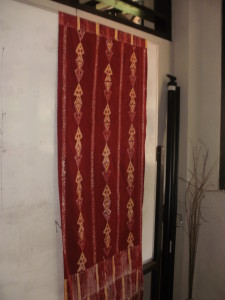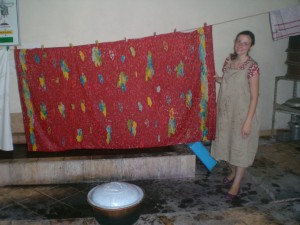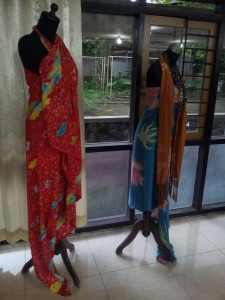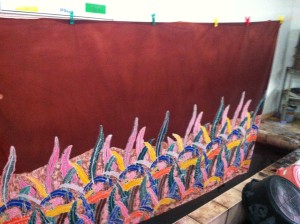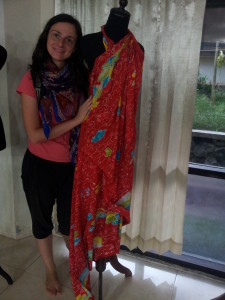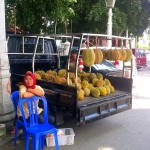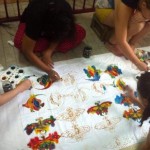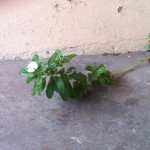My Indonesian experience so far enriched me so much! I am grateful to be living here in Java, Indonesia and to study from professionals the amazing UNESCO certified Masterpiece of Oral and Intangible Heritage of Humanity certified Indonesian textile art, batik. It was one of my dreams to study art formally and this art form is so beautiful and it suits me so much. Besides the technique itself which has its challenges, batik is an art so full of philosophical meaning! Each type of batik says a story.
Batik is a textile art based on the technique of decorating and (repeatedly) dyeing a fabric by using removable wax to save the parts of the fabric that are not intended to be dyed.
Batik is centuries old and the diversity of patterns, motifs and colors used stand as a proof for the cultural diversity that can be found in Indonesia itself which is due to the geographic position of the country that has made it a crossroad of trade, to the successions of religions (Buddhism, Hinduism, Islam) and to the waves of colonization.
Scholars have identified the existence of different batik forms in China, Japan, India, Thailand, Malaysia, Central Asia, Africa, Egypt and Europe but the Javanese have worked passionately and constantly on perfecting this art. The abundance of materials such as wax, vegetable paste, paraffin and dyes and the tropical weather conditions in Java make it a perfect place to nurture a constant development of this art.
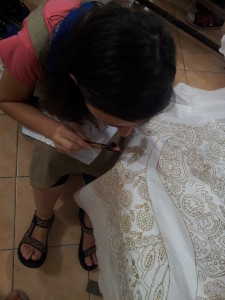
The design elements used in the Javanese batik reflect the broad and varied history of the island and here I pin point just some of them:
– there are elements such as the lotus or kawung – the interlocking and intersecting circular designs that resemble the seed of life – that can be found in both Hindu and Buddhist temples;
– Islam influence is traceable through the arabesque and the calligraphy designs and the avoidance of human or animal shapes;
– the royal court of Surakarta and the court of the sultan in Yogyakarta have developed each specific designs that were allowed to be wore only within each of the palaces;
– there is even a type of batik, such as the pagi-sore batik which is destined to be used only at specific ceremonies or in specific moments of the day (pagi means morning and sore means afternoon);
– the Chinese, which have established themselves mostly as middle and upper class in the Indonesian society brought to batik motifs such as the lions, dragons and beautiful flowers in bright colors. Also, the Chinese population, who settled mostly in the North of Java, along the coast, with its entrepreneurial skills, opened up a lot of batik workshops, making batik something more like an industry. This industrial start had been seriously challenged in the 20th century by the cheap textile imports from Japan, which led to the closing down of a series of workshops and the unemployment of professional batik makers. This situation lasted a long time, also because of the World War II and the anticolonial struggles, leading to a loss of batik styles and specialties. But once Indonesia gained its independence in August 1947, batik become one of the symbols used for the unification of the nation.
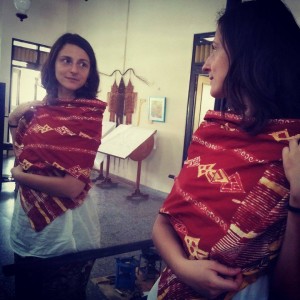
Today, the industrial textile printing technology made batik patterns extremely affordable and ubiquitous, so one can find them not only on ceremonial clothing, but also as curtains, pillow cases, sheets and other accessories. Still, this type of mass printing, although called batik because of the patterns used, it is not original batik because the waxing and dying processes are completely absent during production. Therefore, experts wouldn’t even call the kind of really cheap, printed batik, batik. Nevertheless, this phenomenon could not go unnoticed because it made batik patterns more popular and the real batik tulis more valued.
Shortly put, the original technique is as follows: the design is first drawn on paper and then transferred on the previously prepared piece of cotton or silk which is intended to be used. Some very experienced batik professionals could start directly with drawing with wax, as they know the pattern by heart. In order to draw with wax, a tool called canting is used. It looks like a pen, so that is why the batik completed with this so called hand-written technique is called batik tulis, after the Indonesian word for writing, being the most time-consuming and most expensive batik. Another option, available since the 1840s is using a cap, which means a copper stamp designed in the shape of a certain motif, which makes the job far more faster. A lot of batik of nowadays is done by mixing the tulis and the cap techniques, which makes it affordable for a larger audience. After finishing the first wax pattern, dying follows. The more colors are used, the longer the process becomes, as the colors that need to be saved according to the design, are covered with wax on both sides of the cloth, before applying the next color. Eventually the wax is removed and the batik product is finished. Every detail of each of the previously mentioned step should be carefully considered: the texture of the fabric, the wax mixture that is used, the color recipes vary according to each type of design. Some color recipes are family secrets that are passed on!
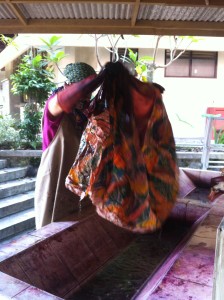
Today, mostly synthetic colors are used, which makes the process faster and cheaper, but originally certain roots and leaves of plants were used to produce the color. Local plants affected the shades of color, making each region of Java to have its characteristic shades.
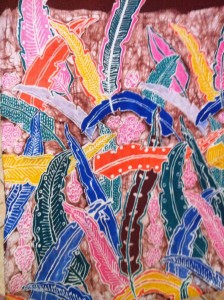
For me batik is amazing because throughout history and even today the conditions for producing batik have been similar to the ones of sweatshops, but passionate people felt the urge to express themselves creatively into beautiful patterned textiles! Also, the process itself, which requires so much patience, focus and attention, I consider it to be equal to a meditation state, adding to the final product a spiritual dimension.
The importance given to batik in the Indonesian culture of today was recently reinforced during the Indonesian Fashion Week which took place in Jakarta in the beginning of this month of March. One special and highly regarded fashion show of this year was created by Anne Avantie, a highly respected designer. Previously, in December, the most famous market in Surakarta for finding the most exquisite batik tulis, Pasar Klewer, burned down. Anne Avantie went and gathered as much of the burned batik as she could and created a special show with these pieces. A video of the show can be seen here and a review of the show with more photos here.
All in all, I am sure that this experience of studying and creating batik has changed me, having a profound effect over how I look at the design and the color of textiles and not only textiles. From now on I always look for the story.
